We may earn money or products from the companies mentioned in this post. This means if you click on the link and purchase the item, I will receive a small commission at no extra cost to you ... you're just helping re-supply our family's travel fund.
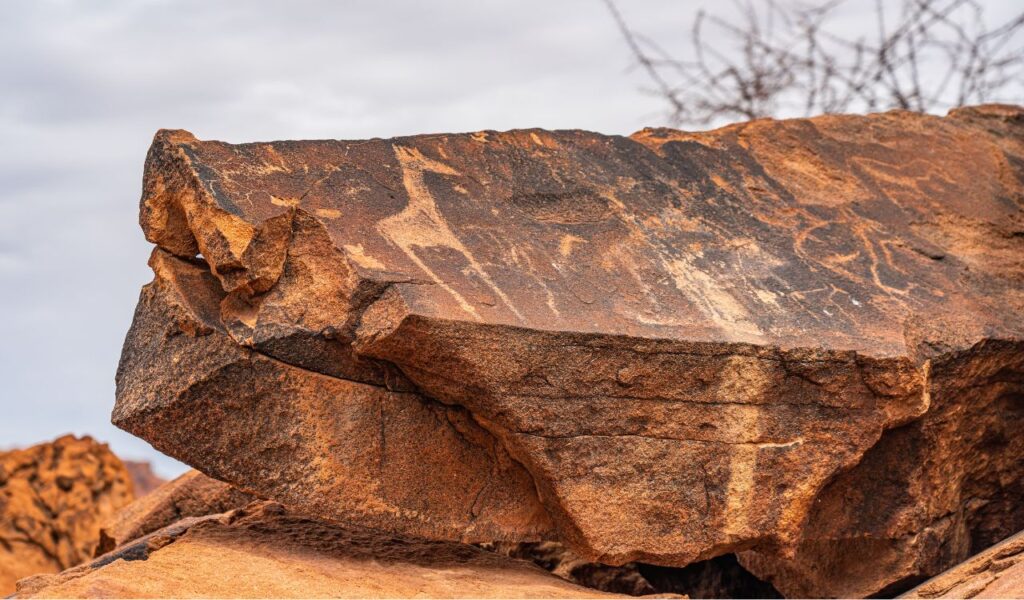
Before writing or cities, people painted and carved their lives onto stone. Rock art wasn’t just decoration, it carried stories, rituals, and memory through time. From Ice Age caves in Europe to desert shelters in Africa, Asia, and the Americas, these places reveal how humans everywhere used art to make sense of the world. Here are ten remarkable sites that still speak across thousands of years.
Altamira Cave, Spain
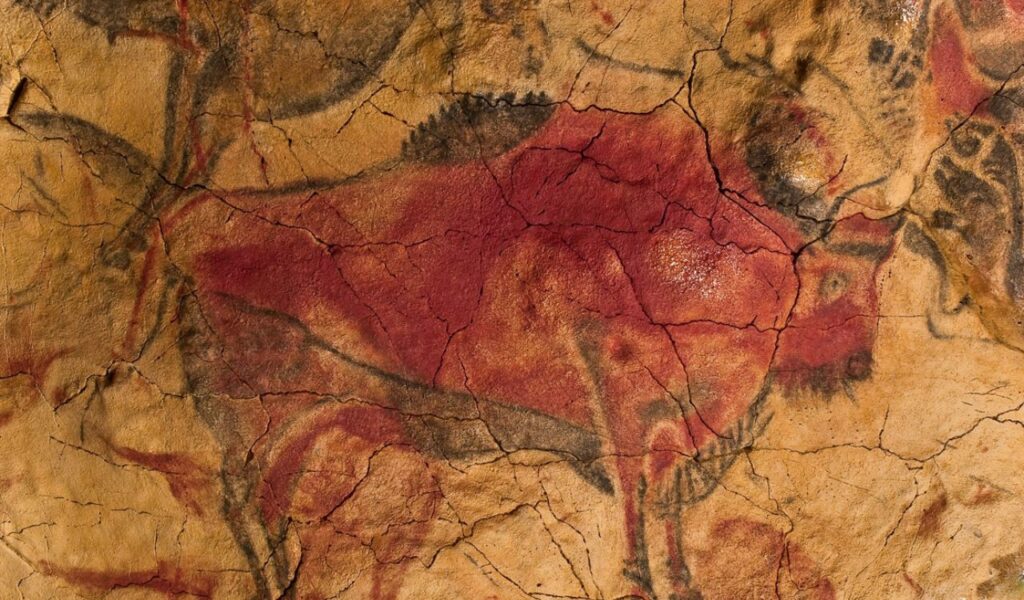
Altamira, discovered in the 19th century, shocked scholars with lifelike bison and deer shaded with striking realism. Created over 20,000 years ago, the paintings proved that prehistoric artists had remarkable skill. Public visits are now to the Neocueva replica, while the original cave allows only rare, tightly controlled entry. Altamira remains a landmark in the study of Paleolithic art and its power to change perceptions.
Lascaux Cave, France
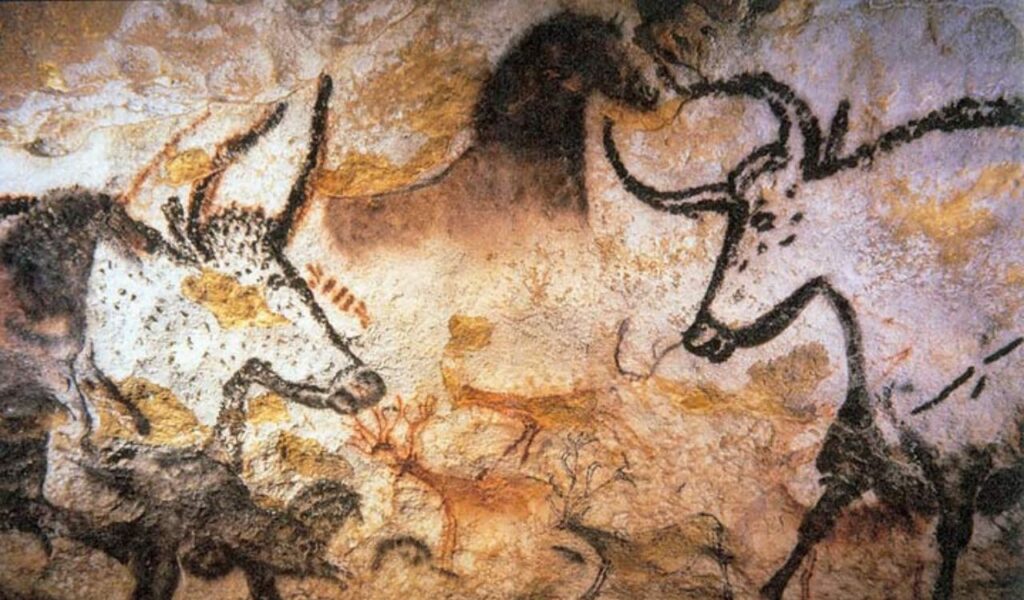
Lascaux, uncovered by local youths in 1940, holds vast panels of horses, aurochs, and stags from about 17,000 years ago. The cave was closed to protect the fragile art, but full-scale replicas now bring the experience to visitors. Lascaux II and the modern Lascaux IV International Centre for Cave Art recreate the cave’s grandeur, showing why it remains one of the world’s most celebrated prehistoric sites.
Chauvet Cave, France
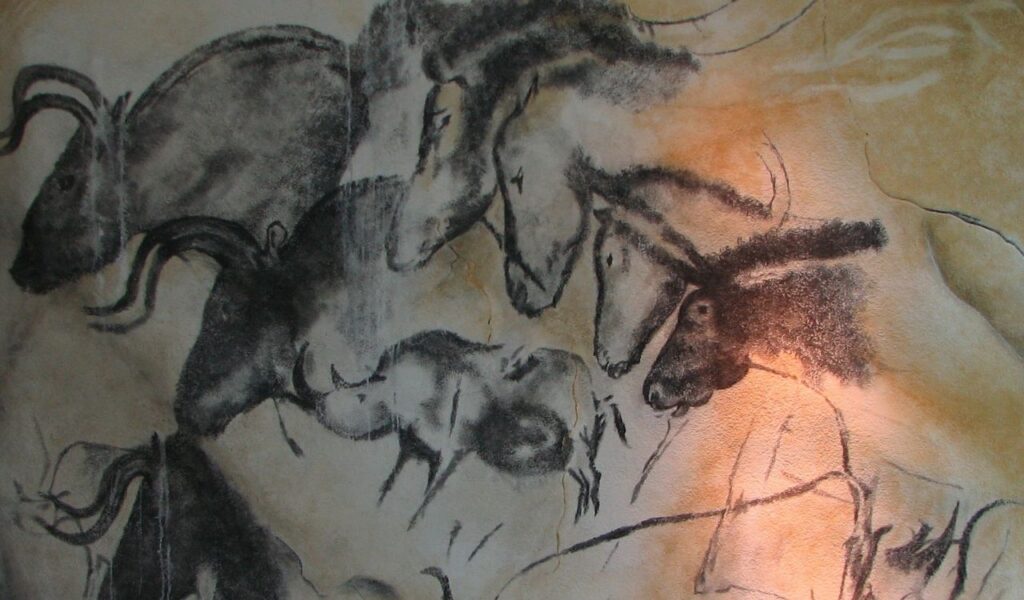
Chauvet’s walls feature lions, rhinoceroses, and mammoths with a sophistication rare for such antiquity. Dating remains debated, but most panels fall between 30,000 and 36,000 years ago in the Aurignacian period. The artistry shows fluid motion and complex composition, offering a vivid look at Ice Age imagination. Chauvet demonstrates that symbolic art and storytelling were thriving far earlier than once believed.
Apollo 11 Cave, Namibia
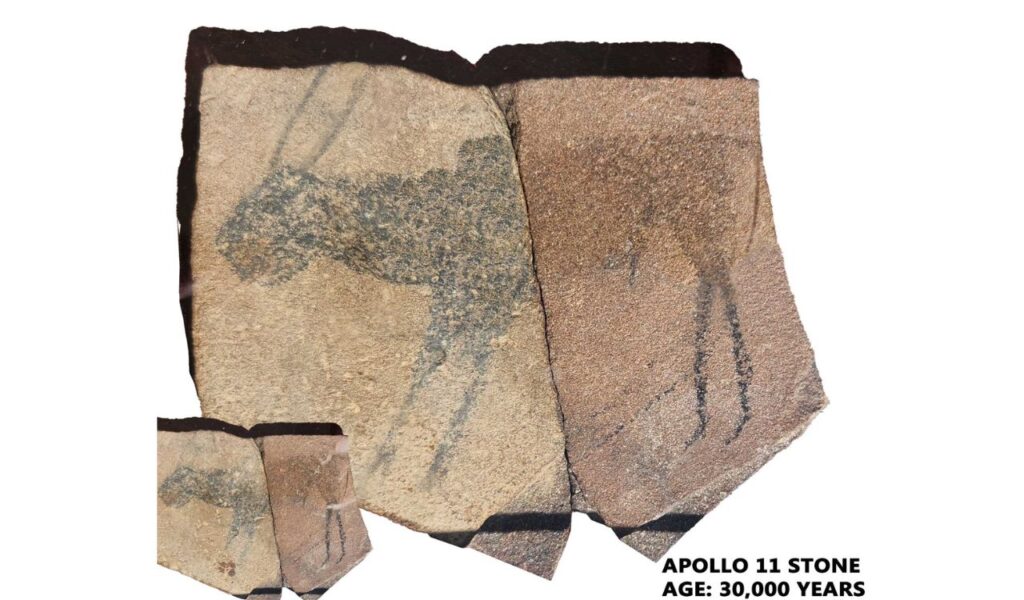
High in Namibia’s Huns Mountains, the Apollo 11 Cave yielded painted stones with animal figures dated to roughly 25,000–27,500 years ago. These small slabs are among the oldest known examples of portable art in Africa. Combined with engravings and other paintings from the region, they reveal how early communities expressed spiritual and daily life in images, anchoring southern Africa’s deep cultural history.
Tassili n’Ajjer, Algeria
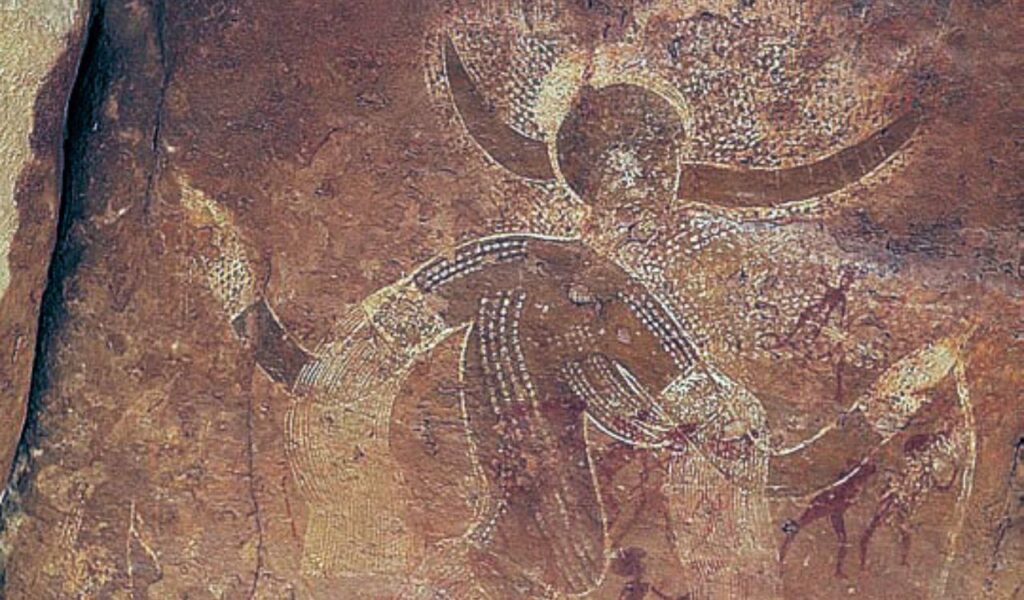
The sandstone plateau of Tassili n’Ajjer holds tens of thousands of engravings and paintings spread across more than 10,000 years. Early Holocene images show cattle, hunters, and wildlife in a Sahara that was once green, while later styles introduce abstract and symbolic figures. Some images remain mysterious, fueling speculation about their meaning. Tassili preserves both climate history and human adaptation in vivid form.
Bhimbetka Rock Shelters, India
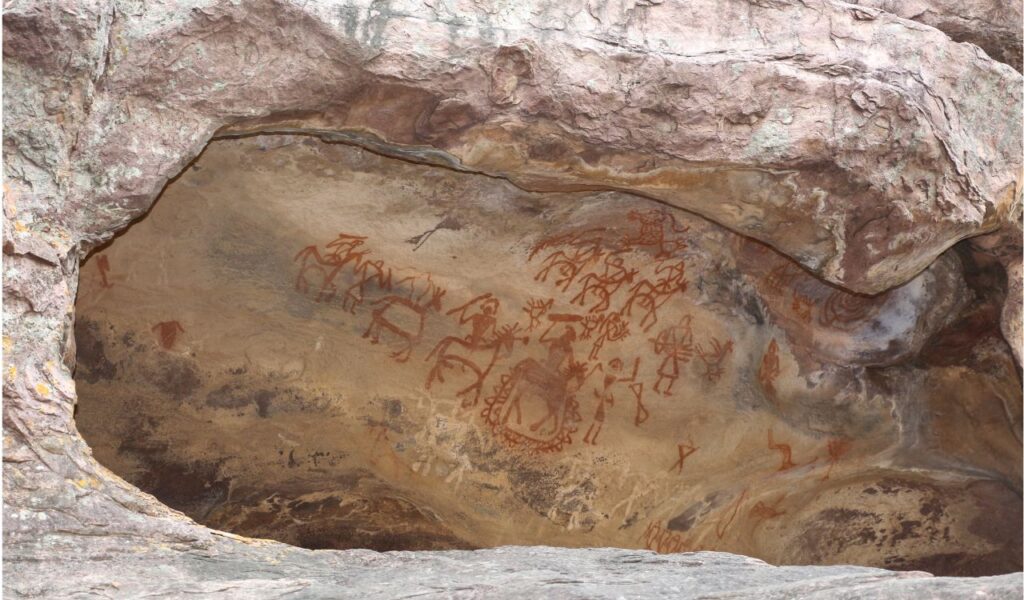
The Bhimbetka shelters in central India contain layered paintings spanning from the Paleolithic to historic times. Over 700 rock shelters exist, with more than 100 decorated. Scenes of animals, dances, and hunting overlay each other, showing how generations used the same cliffs to record their lives. Recognized as a UNESCO site, Bhimbetka is a living archive of artistic expression across millennia.
Leang Timpuseng, Indonesia
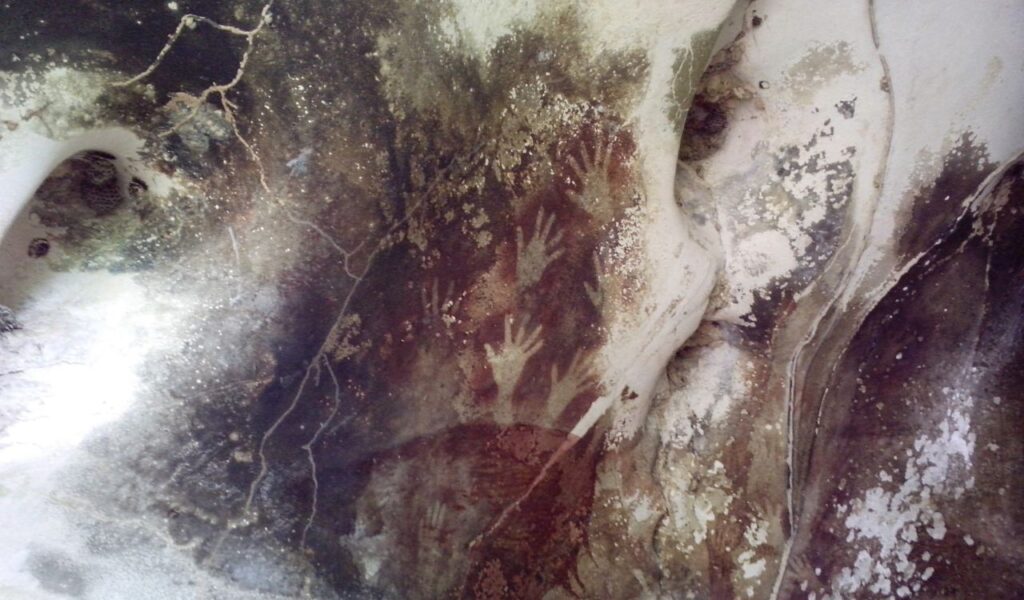
On Sulawesi, researchers found red hand stencils and a babirusa, a pig-like animal, painted more than 40,000 years ago. These are among the oldest known figurative artworks, proving that sophisticated symbolic art appeared in Asia as early as in Europe. Later discoveries on nearby cliffs dated even older, showing that early humans across Island Southeast Asia were already shaping complex visual traditions.
Cueva de las Manos, Argentina
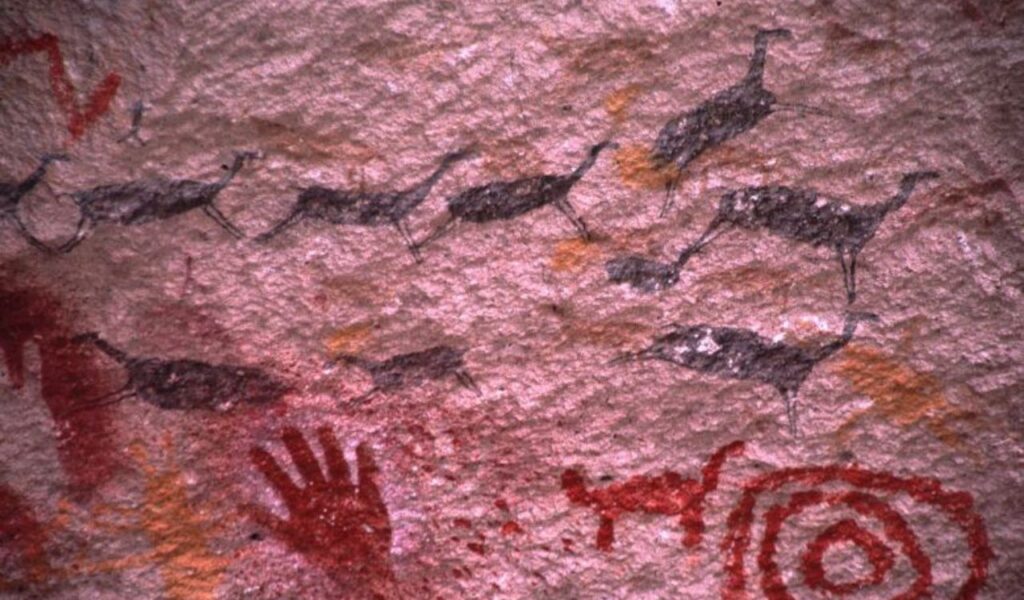
The Cave of Hands in Patagonia is famous for stenciled handprints made by spraying pigment over outstretched palms. Most were created between 7,000 and 9,000 years ago, though the site shows phases of use both earlier and later. Hunting scenes of guanacos add detail to the lives of the groups who painted them. The cave remains one of South America’s most striking prehistoric galleries.
Serra da Capivara, Brazil
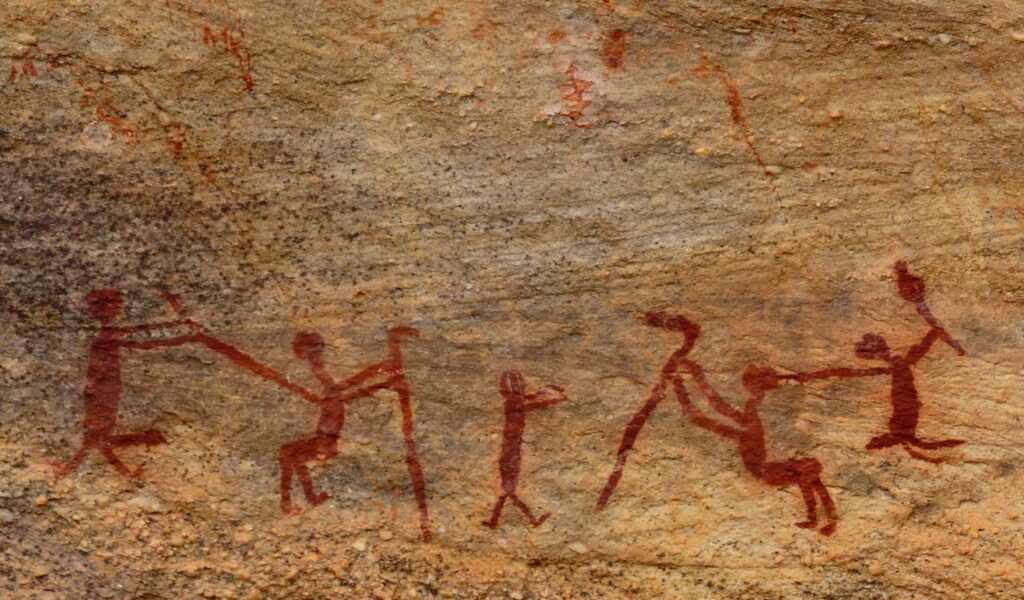
Serra da Capivara National Park preserves thousands of images showing dances, rituals, animals, and daily activities. Many panels date to the Holocene, while some researchers argue that certain paintings may be far older. Proposed dates of more than 25,000 years remain debated, but the site is central to discussions of early human presence in South America. Whatever their age, the artworks are a vivid record of cultural life.
Kakadu National Park, Australia
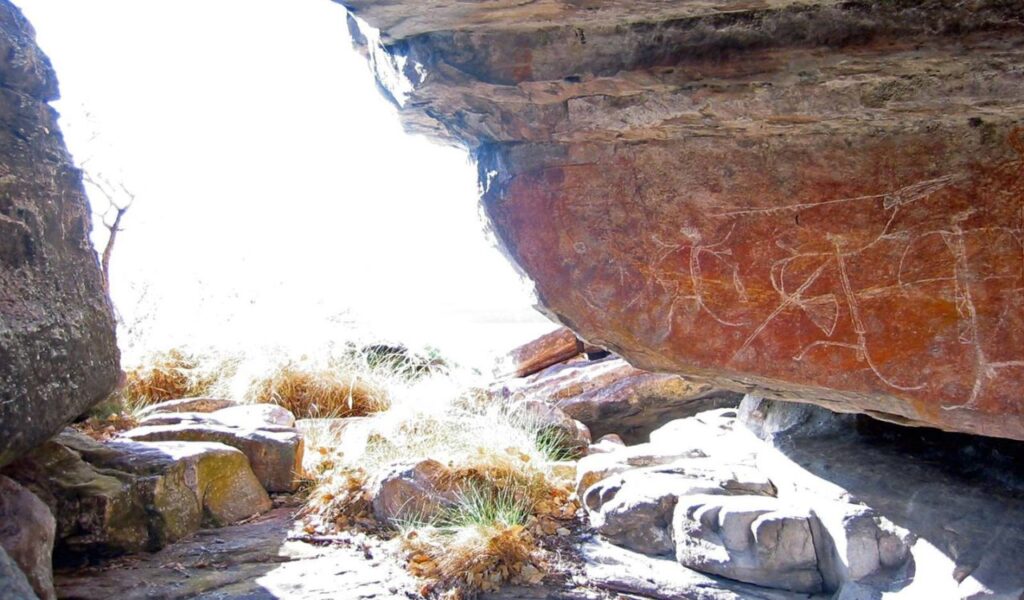
Kakadu’s cliffs hold one of the longest continuous records of human art, stretching back tens of thousands of years. Some shelters feature depictions up to about 20,000 years old, while others show later contact imagery such as ships and firearms. The famous X-ray style reveals animals with bones and organs painted inside. Still sacred to Aboriginal Traditional Owners, Kakadu’s rock art is a living cultural tradition.